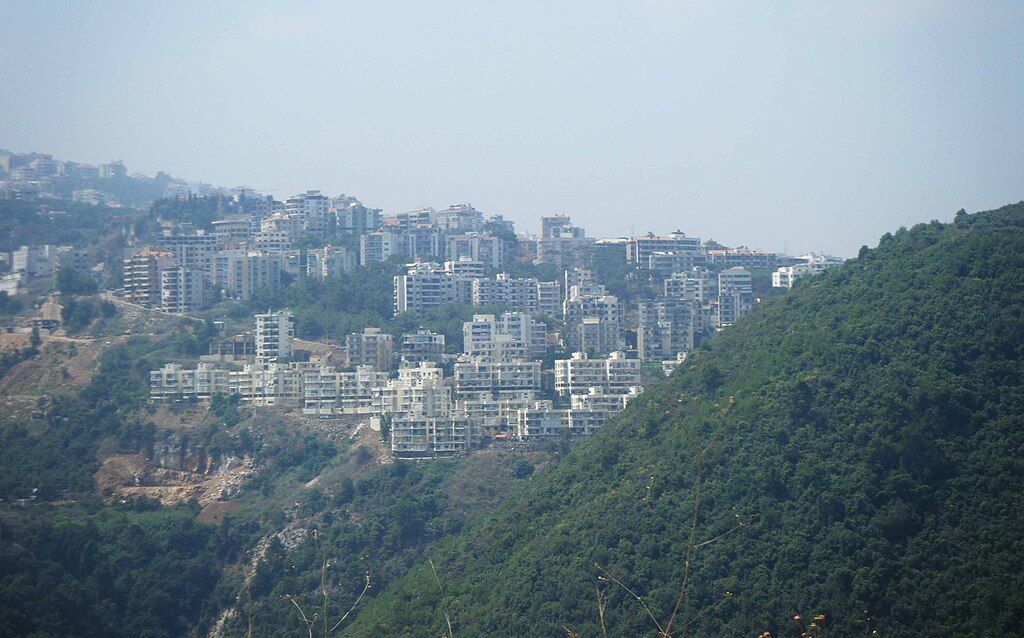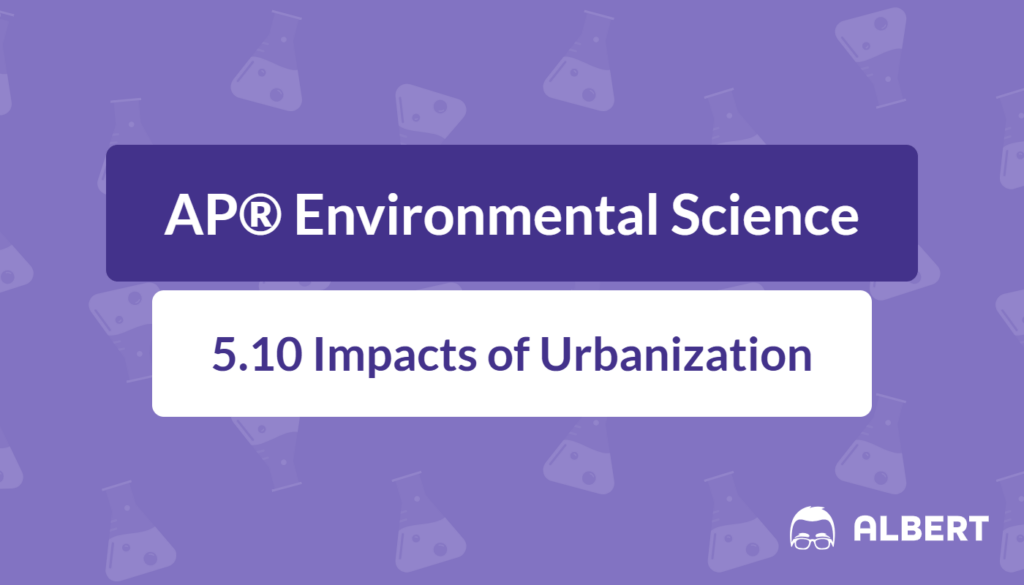What We Review
Introduction
Urbanization remains a central focus in AP® Environmental Science because it offers clear examples of how human activities reshape Earth’s natural systems. This transformation involves the movement of populations from rural regions into urban centers, leading to pressing environmental concerns. Understanding the impacts of urbanization on the environment provides insight into topics that appear on the AP® Environmental Science exam, such as resource depletion, the hydrologic cycle, and the carbon cycle. Therefore, this article explains how urban growth affects the environment and illustrates each concept with accessible examples.
Understanding Urbanization
Urbanization refers to the process in which an increasing proportion of a population comes to live in cities and towns. Historically, urban growth accelerated with industrialization, when job opportunities in manufacturing and services attracted people from agricultural communities. Over the past century, many of the world’s largest cities—such as Tokyo, Mexico City, and New York—have expanded exponentially. This shift has transformed social structures and land use patterns.
Because so many people reside in condensed areas, urban centers must rely on extensive systems for housing, transportation, and energy. These systems, however, place significant stress on natural resources, which triggers various types of environmental damage.
Depletion of Resources
One of the primary effects of urbanization is the overuse or depletion of vital resources. Growing city populations require more water, land, and energy. Because of this, local environments often struggle to meet the rising demand. The impacts of urbanization on the environment can be seen in areas like water supplies. In many metropolitan areas, shallow groundwater sources and reservoirs cannot keep pace with expanding residential and industrial needs. Consequently, unsustainable use of local water supplies often results.
Step-by-Step Solution: Analyzing Water Use in a Growing Urban Area
- Determine the population of the city. For instance, assume a city has 2{,}000{,}000 inhabitants.
- Estimate the average daily water use per person. Suppose each individual uses 150 liters per day.
- Calculate total daily water use by multiplying population size by individual usage: Total_Water_Use = 2{,}000{,}000 \times 150 = 300{,}000{,}000 \text{ liters per day}.
- Compare this result with existing water resources, such as local aquifers or surface water sources. If available water is below this amount, the city experiences a resource deficit.
- This deficit reveals whether the city must find alternative water supplies or institute conservation measures.
Therefore, when urban populations outgrow regional water capacities, the environment suffers from overextraction of groundwater and disruption of local ecosystems.
Saltwater Intrusion
Saltwater intrusion occurs when saltwater from seas or saline aquifers moves into freshwater aquifers. Typically, groundwater systems near the coast maintain a balance between fresh groundwater and denser saltwater. However, rapid urbanization can disturb that equilibrium.
How Urbanization Contributes
First, large-scale pumping of freshwater from coastal aquifers lowers the water table. Because the freshwater level drops, saltwater can move inland. Second, paved surfaces in urban areas reduce natural recharge of groundwater. Therefore, the groundwater flow that once held back the saltwater diminishes. As a result, residents may discover higher salt concentrations in their drinking water.
Example: Coastal City Case Study
A busy coastal metropolis, equipped with industries and growing neighborhoods, might rely heavily on groundwater pumping for drinking water. If this city fails to manage its consumption carefully, it may see salinity levels rise in local wells. Thus, saltwater intrusion exemplifies how unchecked urban growth endangers long-term freshwater quality.
Effects on the Hydrologic Cycle
The hydrologic cycle describes how water continuously moves between Earth’s surface, the atmosphere, and underground reservoirs. Under normal conditions, rainfall infiltrates the ground, supports plant growth, and feeds aquifers. Nevertheless, urban settings significantly alter this natural cycle.
Urban Development and Rainfall Absorption
Widespread buildings, roads, and parking lots limit the soil’s ability to absorb precipitation. Consequently, more rain becomes surface runoff. This extra runoff channels pollutants—such as oils, chemicals, and waste—into rivers or lakes. Moreover, flooding hazards increase because waterproof surfaces prevent rain from seeping underground, illustrating the impacts of urbanization on environment.
Example: Comparing a Natural Area vs. an Urban Area
- Natural Area:
- Rain permeates forest soils, replenishing groundwater.
- Vegetation slows runoff and reduces erosion.
- Urban Area:
- Rain strikes rooftops and paved streets, preventing groundwater recharge.
- Rapid runoff surges through storm drains, carrying pollutants into local water bodies.
Because of these differences, city planners often implement techniques (such as permeable pavement) to minimize environmental harm and maintain balance in the hydrologic cycle.
Increase in Carbon Dioxide Emissions
Another concern relates to the carbon cycle, which tracks the flow of carbon among the atmosphere, biosphere, geosphere, and hydrosphere. Urbanization amplifies \text{CO}_2 emissions by boosting fossil fuel usage in transportation, electricity generation, and manufacturing. In addition, landfills in densely populated cities produce large amounts of methane, which also contributes to global warming.
Sources of Emissions
- Vehicles that run on gasoline or diesel
- Coal- or gas-powered electricity generation plants
- Industrial processing of raw materials
- Decomposing organic waste in landfills
As population densities grow, cities require more vehicles on roads and more factories to supply goods. Therefore, the net amount of \text{CO}_2 entering the atmosphere quickly rises. Because greenhouse gases trap heat, urban regions tend to become “heat islands,” where temperature levels remain higher than in surrounding rural areas.
Example: Emissions from a City vs. a Rural Area
- Urban Area:
- Thousands of cars operate daily, generating \text{CO}_2.
- Factories and power plants run continuously.
- Rural Area:
- Fewer vehicles per capita
- Smaller-scale facilities
Hence, city residents have a responsibility to reduce emissions by encouraging low-emission transportation and supporting energy conservation.
Impervious Surfaces and Their Consequences
Impervious surfaces include roads, sidewalks, buildings, and parking lots—any surface that prevents water from soaking into the ground. Consequently, these surfaces disrupt natural water flows. When rainfall cannot penetrate, runoff accumulates in drainage systems, which can overflow during heavy storms and flood surrounding areas.
How Impervious Surfaces Impact Flooding
- Rainfall usually infiltrates into the soil, but roads and concrete barriers force water to remain on the surface.
- Storm drains can carry only a limited capacity of water, so excess water accumulates.
- More urban development amplifies this challenge, causing frequent and severe flooding events.
This chain reaction jeopardizes public health, local infrastructure, and ecosystems. In effect, repeated flooding harms properties, strains emergency services, and can spread contaminants.
Example: Rainy Day in an Urban Area vs. a Rural Area
- On a rainy day in a city, large volumes of runoff collect on streets or parking lots, overwhelming storm sewers.
- During a similar rain in a rural setting, water quickly seeps into the ground, replenishing aquifers and reducing surface flooding.
Therefore, sustainable city design often includes green roofs and rain gardens to help tackle stormwater runoff and reduce the burden on drainage systems.
Urban Sprawl
Urban sprawl describes the expansion of populated areas into surrounding rural lands. In many regions, sprawl results when people seek more living space, preferring single-family homes and larger yards, rather than higher-density city life. Because development spreads across farmland and forests, habitats become fragmented, which threatens native wildlife. In addition, commuting distances increase, boosting vehicle emissions.

Example: A Sprawling Metropolitan Zone
Consider a city whose population transitions from a compact downtown to sprawling suburbs that extend several miles into the countryside. Formerly pristine forests and wetlands are replaced by subdivisions, strip malls, and highways. Consequently, deer migrations may be disrupted, pollinator habitats are lost, and farmland diminishes. Therefore, this type of growth pattern raises questions about sustainable development.
Conclusion
Urbanization brings economic opportunities and can improve the quality of life for many citizens. Nonetheless, it also contributes to resource depletion, saltwater intrusion, altered hydrologic cycles, higher \text{CO}_2 emissions, impervious surfaces, and sprawling developments. The impacts of urbanization on the environment increase pressure on the environment, particularly when growth outpaces responsible planning. Because each factor ties back to broader AP® Environmental Science principles, analyzing urbanization offers a powerful lens to understand Earth’s interconnected systems. Encouraging sustainable urban design—such as water conservation, low-impact transportation, protection of natural habitats, and the creation of permeable surfaces—can help cities meet the needs of current residents without compromising future generations’ resources.
Important Vocabulary
- Urbanization: The process by which a growing proportion of a population lives in cities, often leading to increased resource use and environmental impacts.
- Saltwater Intrusion: Movement of saltwater into freshwater aquifers, commonly occurring in coastal zones where excessive pumping disrupts the freshwater-saltwater balance.
- Hydrologic Cycle: The continuous circulation of water among Earth’s atmosphere, land, and oceans, essential for sustaining ecosystems.
- Carbon Cycle: The movement of carbon in various forms (e.g., \text{CO}_2) through Earth’s atmosphere, biosphere, geosphere, and hydrosphere.
- Impervious Surface: A human-made surface, such as pavement, that does not allow water to penetrate the soil, contributing to increased runoff.
- Urban Sprawl: The expansion of low-density developments into rural areas, often leading to habitat fragmentation and reliance on vehicles for commuting.
Sharpen Your Skills for AP® Environmental Science
Are you preparing for the AP® Environmental Science test? We’ve got you covered! Try our review articles designed to help you confidently tackle real-world AP® Environmental Science problems. You’ll find everything you need to succeed, from quick tips to detailed strategies. Start exploring now!
- AP® Environmental Science: 5.7 Review
- AP® Environmental Science: 5.8 Review
- AP® Environmental Science: 5.9 Review
Need help preparing for your AP® Environmental Science exam?
Albert has hundreds of AP® Environmental Science practice questions, free response, and full-length practice tests to try out.








